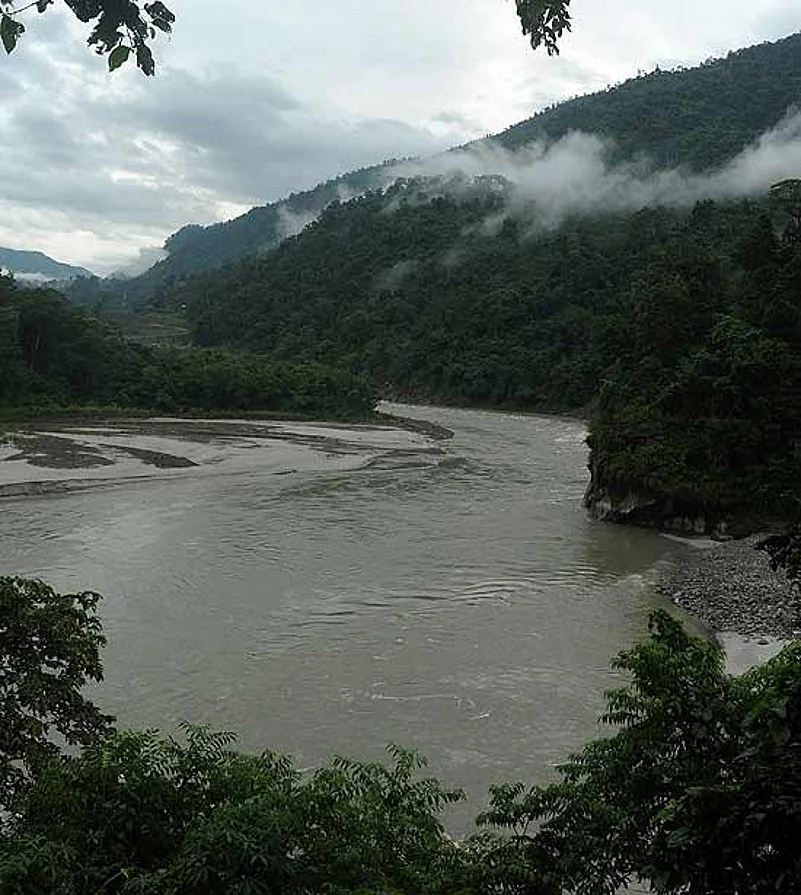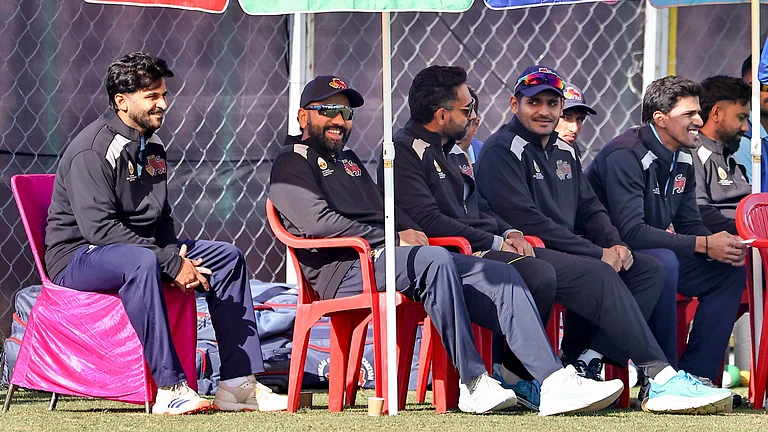
It was a diplomatic script that took success for granted—so sure-footed it seemed, so grounded in goodwill. It has been over eight months since Prime Minister Manmohan Singh travelled to Dhaka to strengthen bilateral ties with Sheikh Hasina’s Awami League-led coalition government, offering many a sop to the neighbour, including a $1 billion line of credit—of which over $200 million is now a grant—and allowing Bangladeshi goods freer access to the Indian market. But he failed to deliver on the one important treaty—a water-sharing agreement on river Teesta.
For Bangladesh, the issue still rankles. And it is now becoming a major stumbling block in strengthening India-Bangladesh ties. In the process, it has also allowed Hasina’s political detractors to unite against a top priority of her foreign policy agenda—reaching out and improving ties with New Delhi.
“Bilateral relations will take a huge hit if India fails to deliver on the Teesta water-sharing agreement,” says Bangladesh foreign minister Dipu Moni. Similar concerns are raised by others in both capitals, some even questioning if India has begun to lose the plot in Bangladesh.
Strong ties with Bangladesh are important to India as it is part of the policy to deepen regional cooperation with its South Asian neighbours. Cooperation with neighbours not only boosts India’s trade and investment, but peace and stability in these countries allows it time to focus more on crucial developmental and economic challenges.
A democratic and secular Bangladesh under Sheikh Hasina is the ideal partner for India. Soon after coming to power in 2008, Hasina made it clear that Bangladesh’s future lay in good relations with India. She took several steps in line with this belief, particularly against terrorist groups operating against India from Bangladeshi soil. Hasina visited Delhi in early 2010 to personally convey her intent. India matched her good intentions with several high-level visits to Bangladesh, culminating in Manmohan’s trip to Dhaka last year. But though he managed to sign a number of crucial agreements that gave easy and free access to Bangladeshi goods—mainly garments—to the Indian market and signed protocols to address the pending boundary and exchange of enclaves issues, a proposed treaty on Teesta was taken off the table at the last minute.
The mercurial chief minister of West Bengal, Mamata Banerjee, emerged as the villain of the set-piece when she effectively scuttled the deal by refusing to be part of Manmohan’s delegation to Dhaka on the eve of the visit. The non-delivery of Teesta and Mamata’s hand in the affair both figure in the minds of Bangladeshis to this day.
“Most people feel that despite being a Bengali, Mamata does not want good relations between India and Bangladesh,” says Saleem Samad, a Bangladeshi political commentator. Mamata’s ‘negative image’ in Bangladesh has worsened with her subsequent actions—a refusal to receive Hasina during her visit to Bengal, and turning down an offer to visit Dhaka as a state guest.
Equally embarrassed over the scuttling of the Teesta agreement, the Indian leadership has since tried to explain to the Bangladeshi side the pulls and pressures of coalition politics in India and the “harrowing time” Manmohan Singh has been getting from his ally, Mamata. It is not that the Hasina government does not understand New Delhi’s myriad maladies, but finds it difficult to explain this at home. This may be one reason why the Bangladeshi foreign minister, who was in New Delhi on Monday to chair the Joint Commission meeting between the two sides with her Indian counterpart, S.M. Krishna, decided to raise it again.
Some say the Teesta issue was raised when US secretary of state Hillary Clinton visited both Dhaka and Calcutta recently. Hillary didn’t talk about it directly but made an oblique reference when she asked Hasina, and later Mamata, what steps they were taking to strengthen bilateral and regional cooperation.
“The Teesta agreement is awfully important for Bangladesh, especially since the hype over it at the time of Manmohan’s visit to Dhaka resulted in a spike in expectations,” Fazal Kamal, a media commentator in Dhaka, told Outlook.
Sharing of river waters between India and its neighbours has traditionally been a difficult area; more so, when it has involved a country like Bangladesh that has mostly seen New Delhi as a “big brother” trying to deny its smaller sibling its legitimate share. In 1996, when the two sides managed to sign the Ganga water treaty, it was possible only because the then chief minister of West Bengal, Jyoti Basu, had fully backed the agreement.
But the success of the earlier treaty has in a way hardened Mamata’s position on Teesta. Her aides argue that because of the Ganga water treaty, whereby India has to give a quantity of the Ganga waters to Bangladesh during the dry season, the river around Farraka has dried up, affecting the Calcutta port badly and forcing shutdowns in major power plants. This, they say, has happened because there is no existing arrangement to prevent upstream states like UP and Bihar from overdrawing from the Ganga and leaving lesser amounts of water for Bengal. They fear a similar agreement on the Teesta (which originates in Sikkim, flows through north Bengal) with Bangladesh will again result in Bengal’s losing out.
Veena Sikri, former Indian high commissioner to Dhaka, has an important point to make. “How can we talk about sharing before we can even agree on the quantum of water on Teesta?” She pointed out that the claim of the two sides on the quantum of water available in Teesta is so varied that it looks as if they are talking about two different rivers.
But if progress has been made on a number of other crucial areas between India and Bangladesh, why has Teesta become so important?
Altamash Kabir, editor of Sangbad, Bangladesh’s oldest Bengali daily, says relations between the two countries have never been warmer than what they are now. “But non-delivery of the Teesta agreement has raised questions about the willingness or ability of India to deliver on promises and the extent to which it is committed to ensure an equal and mutually beneficial relationship with Bangladesh,” he told Outlook.
What might be the way out? “Early implementation of other agreements, particularly those on boundary, exchange of enclaves and infrastructure development may help in ensuring larger numbers of Bangladeshis interested in improving ties with India,” says Sikri. She argues that projects on railways, power and augmenting the flow of the rivers in Bangladesh can convince people about India’s good intentions.
Maybe the coming years would see the other projects, especially the trade-related ones, taking effect and improving India’s image in the eyes of the common Bangladeshi. But it still needs a pull from Mamata. If only she takes it upon herself to hammer out a deal on Teesta, it would indubitably raise India’s—and her—stocks in Bangladesh.

























